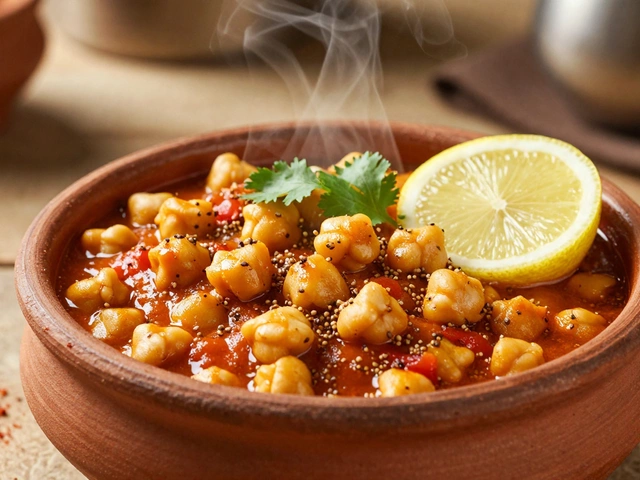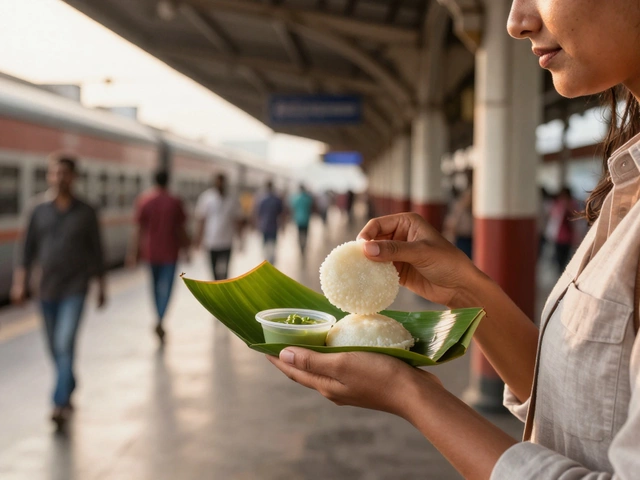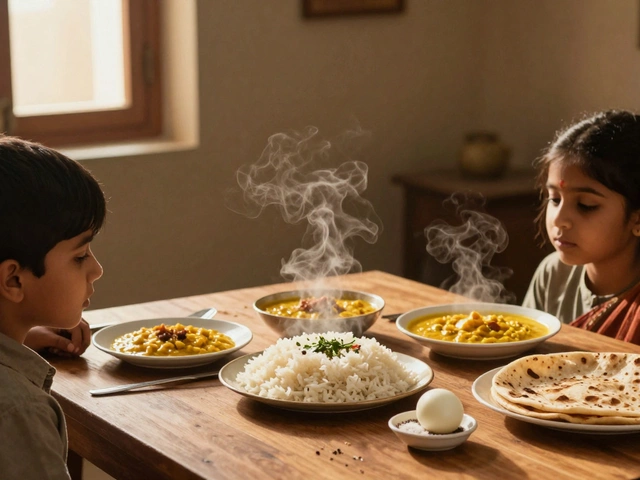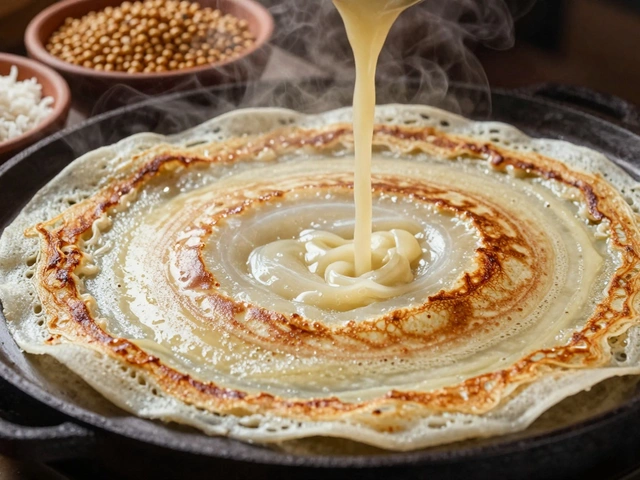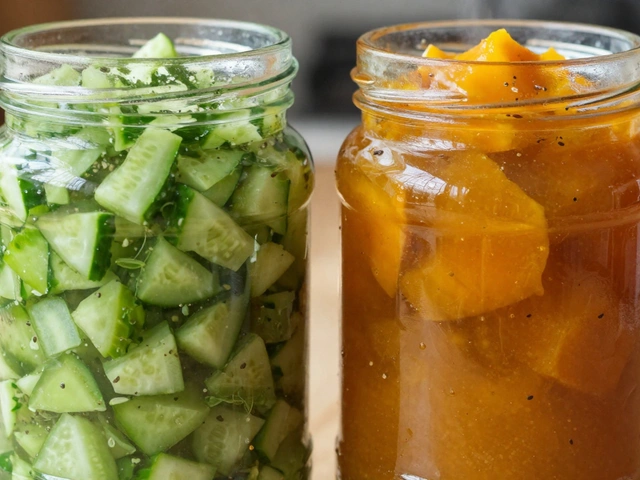When someone mentions Indian food, what comes to mind? Maybe spicy curry or fragrant biryani fills your thoughts. But let's take a closer look at what makes a dish truly 'classic' in Indian cuisine. Indian dishes aren't just about taste; they carry traditions, stories, and a variety of regional influences.
To start off, one key ingredient that adds soul to any Indian dish is its spices. Often referred to as 'masalas', these spice mixes are not just there to heat things up. They're carefully blended to create layers of flavor. Ever tried cooking with cardamom or cumin? They can transform even the simplest recipe into a savory delight, providing mouth-watering aromas that make Indian food simply unforgettable.
- Defining a Classic
- Spices and Ingredients
- The Role of Dal
- Curry Craze
- Indian Snacks
- Tips for Beginners
Defining a Classic
What exactly makes a dish a classic in Indian cuisine? It's not just about popularity or tradition; it's a mix of cultural significance and flavor profiles that have stood the test of time. These dishes often include staple ingredients and methods that reflect the diverse regions of India. Think of them as the foodie gems of Indian culinary heritage.
For a dish to earn the 'classic' label, it usually combines a balance of spices, textures, and tastes that might include sweet, sour, spicy, and salty all in one bite. Dishes like chicken curry or dal makhani always come to mind. Why? Well, because they're made in countless households and featured on most Indian restaurant menus worldwide.
Classic Indian dishes often showcase regional diversity too. For instance, in the north, you’ll find thick, creamy gravies, while in the southern parts, coconut and curry leaves are the stars. What ties these variations together is their use of essential Indian spices and cooking techniques. Whether it's tandoori from Punjab or dosa from Tamil Nadu, each one carries the heart of a specific area.
Essentially, classic Indian dishes are those that have connected families across generations, creating a sense of nostalgia and comfort. They encapsulate the spirit of India, with each dish telling its unique story, enhanced by a rich variety of spices and ingredients.
Spices and Ingredients
Ever wonder what makes Indian dishes pop with flavor? It's all about the spices and ingredients that go into them. Indian cooking is like painting, but with spices. Each one adds its own touch, creating a masterpiece of taste.
Let's talk about some of the must-haves in traditional Indian cooking. You'll often find turmeric, which gives that bright yellow color and is said to have anti-inflammatory properties. Cumin is another staple, offering a warm, earthy flavor that perfectly complements vegetables and meats. And then there's coriander, aromatic and fresh, adding citrus notes to balance out the heat.
But it doesn’t stop there. Ginger and garlic paste is often used as a base for many classic Indian recipes. It lays down a flavorful foundation that lifts everything else in the dish. And if you’re chasing that ideal kick of heat, chili powder is your buddy. But remember, it's about flavor depth, not just burn.
What about the ingredients? Lentils, or 'dals', are a staple in Indian kitchens. They're rich in protein, making them essential for vegetarians. In fact, about half of India relies on vegetarian diets, so lentils are like their bread and butter. Then we have yogurt, often used to temper spicy dishes, giving them a creamy finish and adding a tangy twist.
Here's a little breakdown of how commonly some of these spices are used in Indian households based on their frequency:
| Spice | Common Usage (%) |
|---|---|
| Turmeric | 95% |
| Cumin | 90% |
| Coriander | 85% |
Whether you're a seasoned cook or a newbie to the world of Indian cooking, these spices and ingredients are your key ingredients to unlock vibrant flavors. Next time you’re in the kitchen, try experimenting with these essentials, and you'll see how you can turn any meal into a feast packed with authentic Indian taste.
The Role of Dal
Dal isn't just a side dish in Indian meals; it's a staple that fills homes with warmth and comfort. This humble dish is made from lentils or split pulses and is a major source of protein in vegetarian Indian diets. You might be surprised to know that over fifty types of dals exist, each with its own flavor and health benefits. No wonder dal holds a significant role in many classic Indian dishes.
Cooking dal can be a breeze. The basics involve simmering your choice of lentils until tender and then seasoning them with a tempering of spices. This 'tadka' usually includes mustard seeds, cumin, garlic, and sometimes a hot chili for a spicy kick. Sounds simple? That's because it is!
If you're new to making dal, try moong dal or masoor dal to begin with. They're quick-cooking and easy to manage. Here's a quick recipe to get you started:
- Rinse and soak 1 cup of dal for about 30 minutes to reduce cooking time.
- In a pot, bring the dal to boil with 2-3 cups of water. Add a pinch of turmeric and salt.
- While that's boiling, prepare the tempering in a pan with some ghee (clarified butter).
- Add mustard seeds, cumin seeds, chopped garlic, and chili. Let them sizzle for a minute.
- Pour the tempering over the cooked dal, stir, and serve hot with rice or chapati.
Dal is easy to adjust to your taste, whether you like it thick or with more liquid. Plus, it's versatile enough to match nearly every regional cuisine in India. Whether enjoyed with a generous squeeze of lemon or the fragrant touch of coriander leaves, dal truly stands as an icon in the realm of classic Indian recipes.
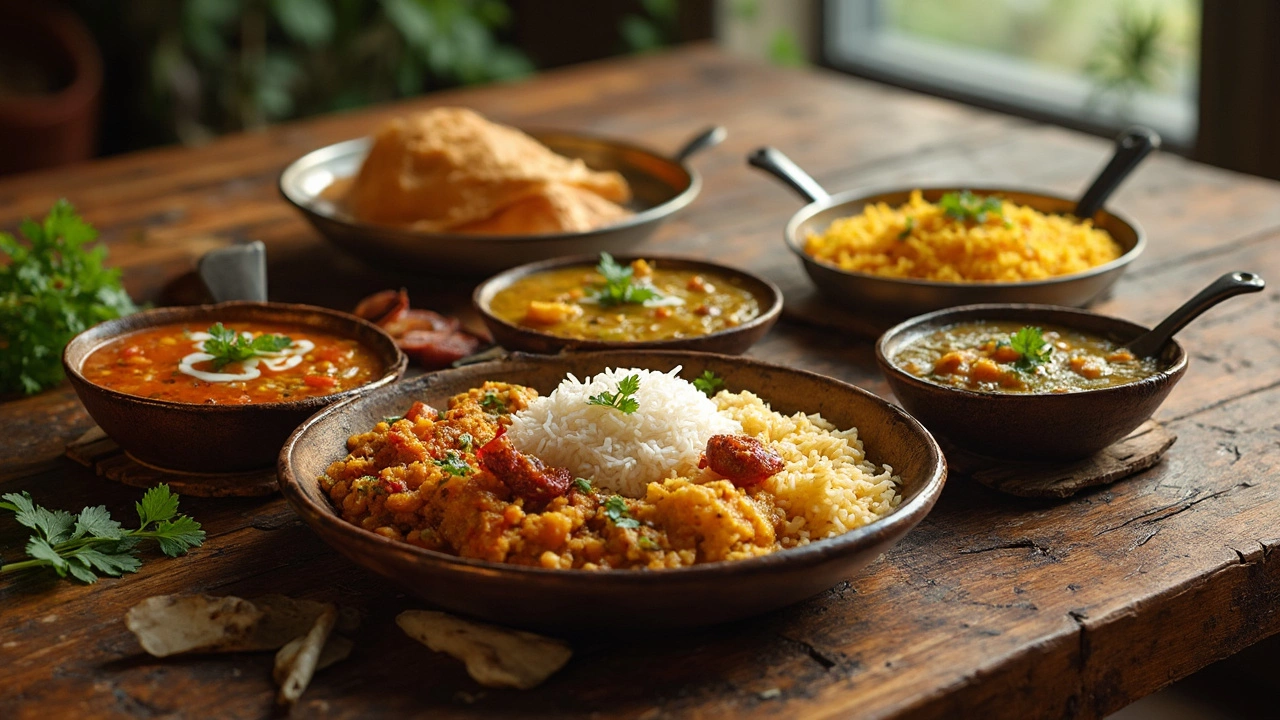
Curry Craze
It's no secret that curry is often the star of the show when it comes to Indian dishes. This isn't just one dish; it's a whole kingdom of flavors, textures, and aromas. The term 'curry' itself can mean different things depending on where you are. For some, it's a thick, rich sauce; for others, it's a lightly flavored broth.
In India, curries aren't always spicy. What makes them stand out is their diverse blend of spices that balance heat with other flavors like sweetness and tang. A classic Indian recipe for curry often begins with a base of onions, ginger, garlic, and tomatoes. From there, you add a unique mix of spices – usually coriander, turmeric, and garam masala – to create that irresistible taste.
The truth is, there’s almost an infinite number of curry styles across India. You've got creamy butter chicken from the North and spicy vindaloo from Goa in the South. Each region has its version, showing off local ingredients and flavors.
If you're looking to whip up an easy curry at home, here’s a basic recipe anyone can follow:
- Sauté onions in some oil until they’re golden.
- Add ginger and garlic paste, cooking till the raw smell fades.
- Mix in tomatoes, cooking till they soften.
- Add spices like turmeric, coriander, and your choice of meat or vegetables.
- Pours in some water or stock and simmer until everything is cooked through.
- Finish with a sprinkle of garam masala and fresh coriander leaves.
Remember, the secret to the perfect curry is tasting as you go. Adjust the spices to fit your preference. And remember, not all curries are the same. So go ahead, experiment with flavors, and discover your own curry craze!
Indian Snacks
Imagine you're walking down a bustling street in Mumbai. The aroma of street food hits you, teasing your taste buds with promises of spicy, tangy, and crunchy delights. Indian snacks are a world of their own, offering a variety of flavors and textures that are anything but boring.
Let's talk about one of the most beloved snacks — samosas. Who can resist those crispy, golden pockets stuffed with spicy potatoes and peas? They're the perfect mix of comfort and flavor, and they're incredibly popular at parties or as the quintessential tea-time treat.
Then there's the iconic chaat, a category of snacks that's basically a flavor explosion. Think crunchy sev, tangy tamarind, spicy chutneys, and fluffy potatoes all mixed together. It’s a roller coaster of taste that will leave you craving more. Popular chaats include pani puri, bhel puri, and aloo tikki, each with its own unique spin.
For those who love a good crispy crunch, there's pakoras. These are deep-fried fritters made from vegetables like onions and spinach dipped in chickpea batter. It's like the Indian version of tempura but with a spicy twist.
Here’s a fun fact: in a typical Indian household, there’s always something laid out on the table like bhujia or masala peanuts, ready to greet guests or just to nibble on with some afternoon tea. This just shows how ingrained snacks are in the daily life of Indian cuisine.
If you're planning to try your hand at making Indian snacks, one tip is to get your spice mixes right. For instance, chaat masala is a definitive spice blend you'll want to have in hand. It's the magic dust that brings a lot of these snacks to life.
Dare to try making these snacks at home? You won’t regret it. They're simpler than they seem and will have you feeling like you've just taken a food tour across India right in your kitchen.
Tips for Beginners
Diving into the world of Indian dishes for the first time? It might seem intricate with all those spices and techniques, but with a few handy tips, you’ll be whipping up deliciousness in no time.
For starters, stock up on some essential spices. There’s a good chance you’ll be using cumin, coriander, turmeric, and garam masala in most recipes. Keep them fresh and stored in airtight containers to retain their magic. Spices lose their potency over time, so using fresh ones ensures your food packs a punch.
Cooking Indian food is as much about the process as it is about the ingredients. Here’s a pro-tip: before adding onions or garlic, heat a bit of oil and ‘temper’ your spices. That simply means warming them up in the oil until they release their oils and aromas, enhancing the flavor manifold. You'll smell the difference!
If you're feeling overwhelmed, start with something simple like a dal or a basic curry. They’re less intimidating but still quintessentially Indian. Plus, they introduce you to the techniques without bombarding you with too many elements.
- Basmati rice pairs well with many Indian meals. Rinse it well before cooking to remove excess starch, then cook it with double the water for fluffy grains.
- Balance flavors using a bit of sweetness, acidity, and heat. A squeeze of lemon or a sprinkle of sugar can do wonders.
- Don’t shy away from tasting as you go. This helps you adjust the seasoning and spices according to your preference.
Embrace the trial and error. Every cook has had their fair share of flops, so don’t be deterred. Remember, practice makes perfect, and soon you’ll have your own versions of classic Indian recipes that suit your taste buds perfectly. Happy cooking!

